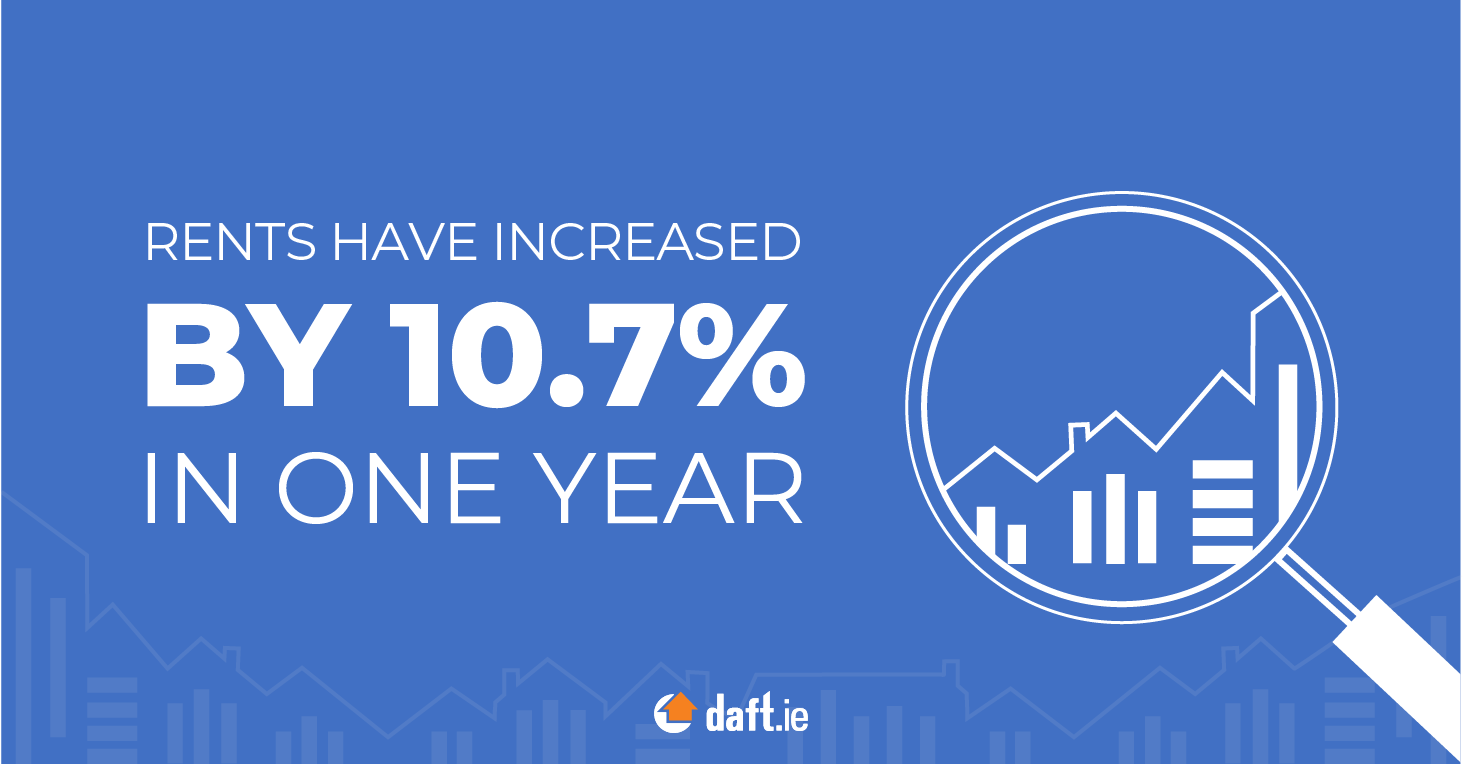Irish Rental Report Q2 2023 | Daft.ie
Daft Reports
- Ronan Lyons (House Price, Q1 2024)
- Ronan Lyons (Rental Price, Q4 2023)
- Ronan Lyons (House Price, Q4 2023)
- Ronan Lyons (Rental Price, Q3 2023)
- Ronan Lyons (House Price, Q3 2023)
- Ronan Lyons (Rental Price, Q2 2023)
- Ronan Lyons (House Price, Q2 2023)
- Ronan Lyons (Rental Price, Q1 2023)
- Ronan Lyons (House Price, Q1 2023)
- Ronan Lyons (Rental Price, Q4 2022)
- Ronan Lyons (House Price, Q4 2022)
- Ronan Lyons (Rental Price, Q3 2022)
- Ronan Lyons (House Price, Q3 2022)
- Ronan Lyons (Rental Price, Q2 2022)
- Ronan Lyons (House Price, Q2 2022)
- Ronan Lyons (Rental Price, Q1 2022)
- Ronan Lyons (House Price, Q1 2022)
- Ronan Lyons (Rental, Q4 2021)
- Ronan Lyons (House Price, Q4 2021)
- Ronan Lyons (Rental, Q3 2021)
- Ronan Lyons (House Price, Q3 2021)
- Ronan Lyons (Rental, Q2 2021)
- Ronan Lyons (House Price, Q2 2021)
- Ronan Lyons (Rental, Q1 2021)
- Ronan Lyons (House Price, Q1 2021)
- Ronan Lyons (Rental, Q4 2020)
- Ronan Lyons (House Price, Q4 2020)
- Ronan Lyons (Wealth, H2 2020)
- Ronan Lyons (Rental, Q3 2020)
- Ronan Lyons (House Price, Q3 2020)
- Ronan Lyons (Housing, July 2020)
- Ronan Lyons (Housing, June 2020)
- Ronan Lyons (Housing, May 2020)
- Ronan Lyons (Rental, Q1 2020)
- Ronan Lyons (House Price, Q1 2020)
- Ronan Lyons (Rental, Q4 2019)
- Ronan Lyons (House Price, Q4 2019)
- Ronan Lyons (Wealth, H2 2019)
- Ronan Lyons (Rental, Q3 2019)
- Ronan Lyons (House Price, Q3 2019)
- Pierre Yimbog (Rental, Q2 2019)
- Ronan Lyons (House Price, Q2 2019)
- Ronan Lyons (Wealth, H1 2019)
- Ronan Lyons (Rental, Q1 2019)
- Ronan Lyons (House Price, Q1 2019)
- Ronan Lyons (Rental, Q4 2018)
- Ronan Lyons (House Price, Q4 2018)
- Ronan Lyons (Wealth, H2 2018)
- Ronan Lyons (Rental, Q3 2018)
- Ronan Lyons (House Price, Q3 2018)
- Shane De Rís (Rental, Q2 2018)
- Ronan Lyons (House Price, Q2 2018)
- Ronan Lyons (Wealth, 2018)
- Ronan Lyons (Rental, Q1 2018)
- Ronan Lyons (House Price, Q1 2018)
- Ronan Lyons (Rental, Q4 2017)
- Ronan Lyons (House Price, Q4 2017)
- Ronan Lyons (Rental, Q3 2017)
- Ronan Lyons (House Price, Q3 2017)
- Katie Ascough (Rental, Q2 2017)
- Ronan Lyons (Wealth, 2017)
- Ronan Lyons (House Price, Q2 2017)
- Ronan Lyons (Rental, Q1 2017)
- Ronan Lyons (House Price, Q1 2017)
- Ronan Lyons (Rental, Q4 2016)
- Ronan Lyons (House Price, Q4 2016)
- Ronan Lyons (Rental, Q3 2016)
- Ronan Lyons (House Price, Q3 2016)
- Ronan Lyons (School Report, 2016)
- Conor Viscardi (Rental, Q2 2016)
- Ronan Lyons (Rail Report, 2016)
- Ronan Lyons (House Price, Q2 2016)
- Ronan Lyons (Rental, Q1 2016)
- Ronan Lyons (House Price, Q1 2016)
- Ronan Lyons (Rental, Q4 2015)
- Ronan Lyons (House Price, Q4 2015)
- Ronan Lyons (Rental, Q3 2015)
- Ronan Lyons (House Price, Q3 2015)
- Marcus O'Halloran (Rental, Q2 2015)
- Ronan Lyons (House Price, Q2 2015)
- Ronan Lyons (Rental, Q1 2015)
- Ronan Lyons (House Price, Q1 2015)
- Ronan Lyons (Rental, Q4 2014)
- Ronan Lyons (House Price, Q4 2014)
- Ronan Lyons (Rental, Q3 2014)
- Ronan Lyons (House Price, Q3 2014)
- Domhnall McGlacken-Byrne (Rental, Q2 2014)
- Ronan Lyons (House Price, Q2 2014)
- Ronan Lyons (Rental, Q1 2014)
- Ronan Lyons (House Price, Q1 2014)
- Ronan Lyons (Rental, Q4 2013)
- Ronan Lyons (House Price, Q4 2013)
- Ronan Lyons (Rental, Q3 2013)
- Ronan Lyons (House Price, Q3 2013)
- Ronan Lyons (Rental, Q2 2013)
- Ronan Lyons (House Price, Q2 2013)
- Ronan Lyons (Rental, Q1 2013)
- Ronan Lyons (House Price, Q1 2013)
- Ronan Lyons (Rental, Q4 2012)
- Ronan Lyons (House Price, Q4 2012)
- Lorcan Sirr (Rental, Q3 2012)
- Padraic Kenna (House Price, Q3 2012)
- John Logue (Rental, Q2 2012)
- Ronan Lyons (House Price, Q2 2012)
- Barry O'Leary (Rental, Q1 2012)
- Seamus Coffey (House Price, Q1 2012)
- Joan Burton (Rental, Q4 2011)
- Ronan Lyons (House Price, Q4 2011)
- Philip O'Sullivan (Rental, Q3 2011)
- Sheila O'Flanagan (House Price, Q3 2011)
- Rachel Breslin (Rental, Q2 2011)
- Constantin Gurdgiev (House Price, Q2 2011)
- Cormac Lucey (Rental, Q1 2011)
- Eoin Fahy (House Price, Q1 2011)
- Lorcan Roche Kelly (Rental, Q4 2010)
- Ronan Lyons (House Price, Q4 2010)
- John Fitzgerald (Rental, Q3 2010)
- Patrick Koucheravy (House Price, Q3 2010)
- Gary Redmond (Rental, Q2 2010)
- Jim Power (House Price, Q2 2010)
- Jill Kerby (Rental, Q1 2010)
- Brian Lucey (House Price, Q1 2010)
- Michael Taft (Rental, Q4 2009)
- Alan McQuaid (House Price, Q4 2009)
- Dr. Charles J. Larkin (Rental, Q3 2009)
- Emer O'Siochru (House Price, Q3 2009)
- Ronan Lyons (Rental, Q2 2009)
- Oliver Gilvarry (House Price, Q2 2009)
- Brian Devine (Rental, Q1 2009)
- Dr. Liam Delaney (House Price, Q1 2009)
- Gerard O'Neill (Rental, Q4 2008)
- Ronan Lyons (House Price, Q4 2008)
- Dr. Stephen Kinsella (Rental, Q3 2008)
- Moore McDowell (House Price, Q3 2008)
- Shane Kelly (Rental, Q2 2008)
- Fergal O'Brien (House Price, Q2 2008)
- Eoin O'Sullivan (Rental, Q1 2008)
- Dermot O'Leary (House Price, Q1 2008)
- Dan O'Brien (Rental, Q4 2007)
- Frances Ruane (House Price, Q4 2007)
- John McCartney (Rental, Q3 2007)
- Ronnie O'Toole (House Price, Q3 2007)
- Ronan Lyons (Rental, Q2 2007)
- Constantin Gurdgiev (House Price, Q2 2007)
- Fintan McNamara (Rental, Q1 2007)
- Rossa White (House Price, Q1 2007)
- Geoff Tucker (Rental, Q4 2006)
- Damien Kiberd (House Price, Q4 2006)
- Pat McArdle (House Price, Q3 2006)
- Marc Coleman (House Price, Q2 2006)
- David Duffy (House Price, Q1 2006)
- Austin Hughes (House Price, Q4 2005)
- David McWilliams (House Price, Q2 2005)

10th Aug 2023
Supply and demand on show once more
There are, as ever, a multitude of facts and figures in this latest Rental Report. Depending on where one looks, things could be seen to be getting better or worse.
Those of a more optimistic bent will point to Dublin and Cork cities, where rental inflation has been cooling. In Dublin, annual inflation in open-market rents had been as high as 14.3% in the third quarter of 2022 but is now at 8%. In Cork, the equivalent figures are 12.1% and 7.4%. In Cork, rents actually fell in the first quarter of the year but did bounce back in the second. In Dublin, rents were not quite stable in the first two quarters of 2023 ‐ but not too far off, rising by 0.5% and 0.3% respectively.
Compared to the start of the year, then, open-market rents in Cork are 1.4% higher and in Dublin, they are 0.9% higher. Annualized, these imply far lower rates of increase than have become normal. Meanwhile, in Mayo, market rents have increased by over 10% since the start of the year and in Donegal by over 12%.

These latter figures are what those of a more pessimistic nature will focus on: there may be a few glimmers of hope, but across much of the country, the yawning gap between very strong demand and very weak supply appears not to have changed at all.
Statistics on the availability of homes to rent confirm this gap between Dublin in particular on the one hand and more rural rental markets on the other. Last August, there were just 23 homes available to rent in Dublin City Centre. This August 1st, there were over 100. That is still far too low for a city of Dublin's size and economic importance ‐ even during 2015-2019, when the market was starved of rental accommodation, there were typically almost 300 homes to rent. But it is at least a trend in the right direction.

Overall, across Dublin, for every ten homes that had been available to rent in the late 2010s, there are currently four ‐ up from two. But elsewhere, the improvement in supply has been less noticeable. In both Limerick and Waterford cities, there were just seven homes to rent on August 1st. Technically, in the case of Waterford, that's an improvement on two on the same date a year ago. But nobody would argue that a single-digit number of homes is anywhere close to adequate for some of Ireland's principal cities.
The picture is repeated across other markets, including Connacht-Ulster, which have borne the brunt of the biggest percentage increases in recent quarters.
While layoffs from some of the biggest employers in Dublin (and Cork) may be driving some of the diverging trends, unemployment ‐ which is a far more accurate gauge of overall labour market conditions ‐ is at an all-time low. In June 2023, just 3.8% of those aged 15-74 were unemployed ‐ pipping the previous low of 3.9% set in late 2000/early 2001.
And it's not just that numbers in work are increasing but pay is not. Weekly earnings across all sectors were up 4.3% in early 2023 compared to a year earlier ‐ a faster rate of income growth than in the previous 12 months (2.9%).
So if employment and earnings are growing, why is rent growth in Dublin so different to Donegal? Jobs and wages relate to the demand side of the economy but it is likely that the difference between Dublin and most of the rest of the country is down to housing supply, not housing demand.

Dublin has been the focal point for almost all new rental homes built in the last five years. About 13,000 new rental homes have been opened in the capital in the last five years ‐ and at a growing rate: just a few hundred in 2018, rising to roughly 2,000 per year in 2019-2021 and even more since.
While Dublin has lost existing rental homes due to landlords selling up, so have other parts of the country. Indeed, only in Dublin has new supply had any chance of offsetting the terminations recorded by the RTB.
The conclusion is both a pessimistic one and an optimistic one. The good news is that the close-to-stable rents being seen in Dublin at the moment are at least in part another exhibit in the long list of evidence that supply is the solution to a supply shortage and to high prevailing rents.
The bad news, however, is that costs are prohibitively high for standard private rental accommodation to be built anywhere outside of Dublin for the foreseeable future. For that reason, policy has begun to intervene and it is likely that such interventions will be needed for years to come ‐ not least as the fruits of extra supply are still some years off.
